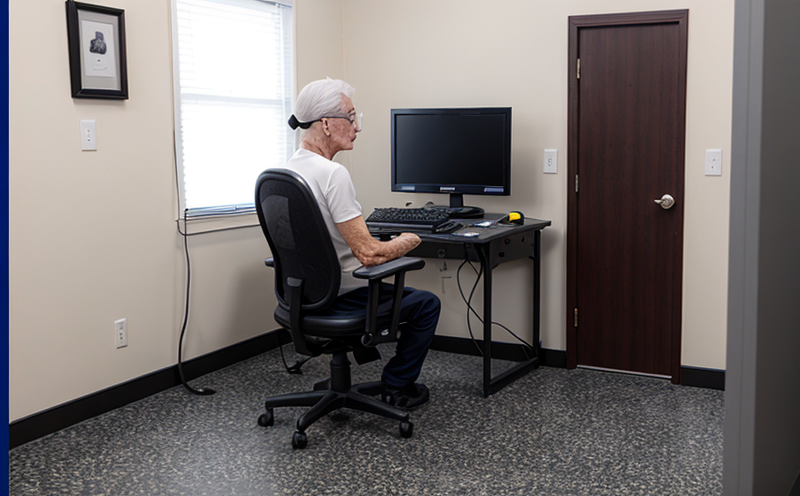EN 530 Abrasion resistance of protective clothing materials
The EN 530 standard is designed to evaluate the abrasion resistance of protective clothing materials used in various industrial and occupational settings. This test is crucial for ensuring that workers are adequately protected against abrasive hazards, which can lead to skin injuries or other serious issues.
Abrasions occur when there is friction between a material surface and an abrasive agent like sandpaper, gravel, or similar rough surfaces. The abrasion resistance of materials used in protective clothing must be robust enough to withstand prolonged exposure without degradation. This ensures that the integrity of the fabric remains intact under normal working conditions.
Protective clothing made from materials with high abrasion resistance can significantly reduce the risk of injury by preventing cuts and scrapes. The EN 530 test simulates real-world scenarios where such hazards are common, providing a reliable measure of how well the material performs in these conditions.
The testing procedure involves subjecting the fabric samples to controlled abrasive action using a specified apparatus. During this process, the sample is rubbed against an abrasive surface under defined load and speed conditions. The test measures both the weight loss and the change in thickness of the specimen after exposure. The results help determine the abrasion resistance grade of the material.
Understanding the abrasion resistance properties of protective clothing materials is essential for manufacturers, designers, and end-users alike. For quality managers and compliance officers, this information ensures that the products meet regulatory standards and perform effectively in demanding environments. R&D engineers can leverage these insights to innovate and improve existing designs. Procurement teams benefit from knowing which suppliers provide materials with suitable abrasion resistance.
Compliance with EN 530 is particularly important for industries such as manufacturing, construction, mining, and healthcare where workers frequently encounter abrasive conditions. By adhering to this standard, companies demonstrate their commitment to worker safety and health. The test results can also be used in marketing communications to highlight the superior quality of protective clothing.
When selecting appropriate fabrics for protective garments, it is vital to consider not only the abrasion resistance but also other critical factors like tensile strength, flame retardancy, and breathability. A balanced approach ensures that the final product provides comprehensive protection against multiple hazards.
The EN 530 test plays a pivotal role in quality assurance processes by providing objective data on material performance under specified conditions. This information supports informed decision-making regarding fabric choices, enabling manufacturers to develop safer, more effective protective clothing solutions.
In conclusion, the EN 530 Abrasion resistance of protective clothing materials test is an indispensable tool for ensuring worker safety in abrasive environments. Its application across various sectors underscores its importance and relevance. By understanding and implementing this standard, stakeholders can contribute significantly to enhancing workplace safety standards globally.
Scope and Methodology
The EN 530 test has a specific scope that defines the types of materials it applies to. This includes woven fabrics made from natural fibers like cotton or synthetic polymers such as polyethylene terephthalate (PET). The methodology involves several key steps:
- Preparation of specimens according to specified dimensions and weights.
- Setting up the abrasive machine with appropriate settings for load, speed, and type of abrasive.
- Rubbing the specimen against the abrasive surface until a predetermined loss in weight is achieved.
The test requires careful adherence to ISO 16092-4:2007, which provides detailed instructions on how to conduct the abrasion resistance tests. The aim is to simulate real-world conditions as closely as possible, thereby providing accurate and reliable results.
After completing the test, the change in weight and thickness of the specimen is measured. Based on these measurements, an abrasion resistance grade is assigned according to predefined criteria. This grade indicates how well the material withstands abrasive action without significant damage.
The methodology ensures consistency across different laboratories performing the same tests, making it a robust tool for quality control purposes. It also allows for comparisons between various materials and their performance under similar conditions.
Why Choose This Test
- Precision in Evaluation: The EN 530 test provides precise data on the abrasion resistance of protective clothing materials. This precision is crucial for making informed decisions about material selection and design.
- Regulatory Compliance: Adhering to EN 530 ensures compliance with international standards, which is essential for manufacturers operating in multiple countries or regions.
- Consistent Results: By following the standardized procedures outlined in ISO 16092-4:2007, laboratories can achieve consistent and reproducible results, enhancing trustworthiness.
- Comprehensive Assessment: The test evaluates multiple aspects of abrasion resistance, including weight loss and thickness changes, offering a holistic view of material performance.
The EN 530 test is particularly valuable for industries where workers are exposed to abrasive environments. It helps manufacturers develop safer products that meet strict safety requirements while maintaining comfort and functionality.
For quality managers and compliance officers, this test offers valuable insights into the durability of protective clothing materials. By ensuring compliance with EN 530, they can contribute significantly to improving workplace safety standards.
Competitive Advantage and Market Impact
- Innovation Driven: Compliance with EN 530 encourages continuous improvement in protective clothing materials. This leads to innovative solutions that enhance worker safety further.
- Better Reputation: Demonstrating adherence to international standards enhances a company's reputation, making it more attractive to customers and partners.
- Cost Savings: By using high-quality materials that pass the EN 530 test, companies can reduce replacement costs associated with damaged or worn-out protective clothing.
The market impact of this test extends beyond individual companies. It contributes to a safer working environment for millions of workers globally. Companies that prioritize safety and quality through compliance with standards like EN 530 set themselves apart from competitors, potentially gaining significant market share in the process.
Moreover, adherence to such rigorous testing procedures fosters trust among stakeholders, including employees, regulatory bodies, and customers. This trust is vital for building long-term relationships and maintaining a strong brand image.





